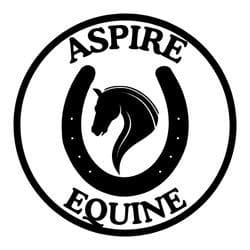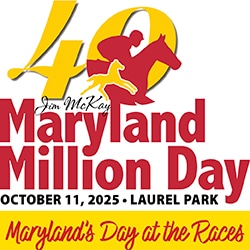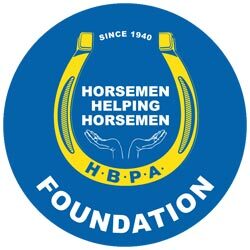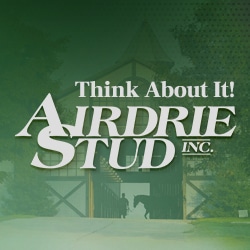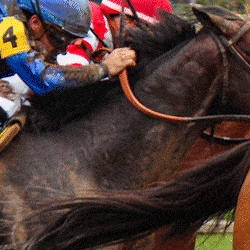A Thoroughbred’s paper trail begins at conception and continues through his racing career
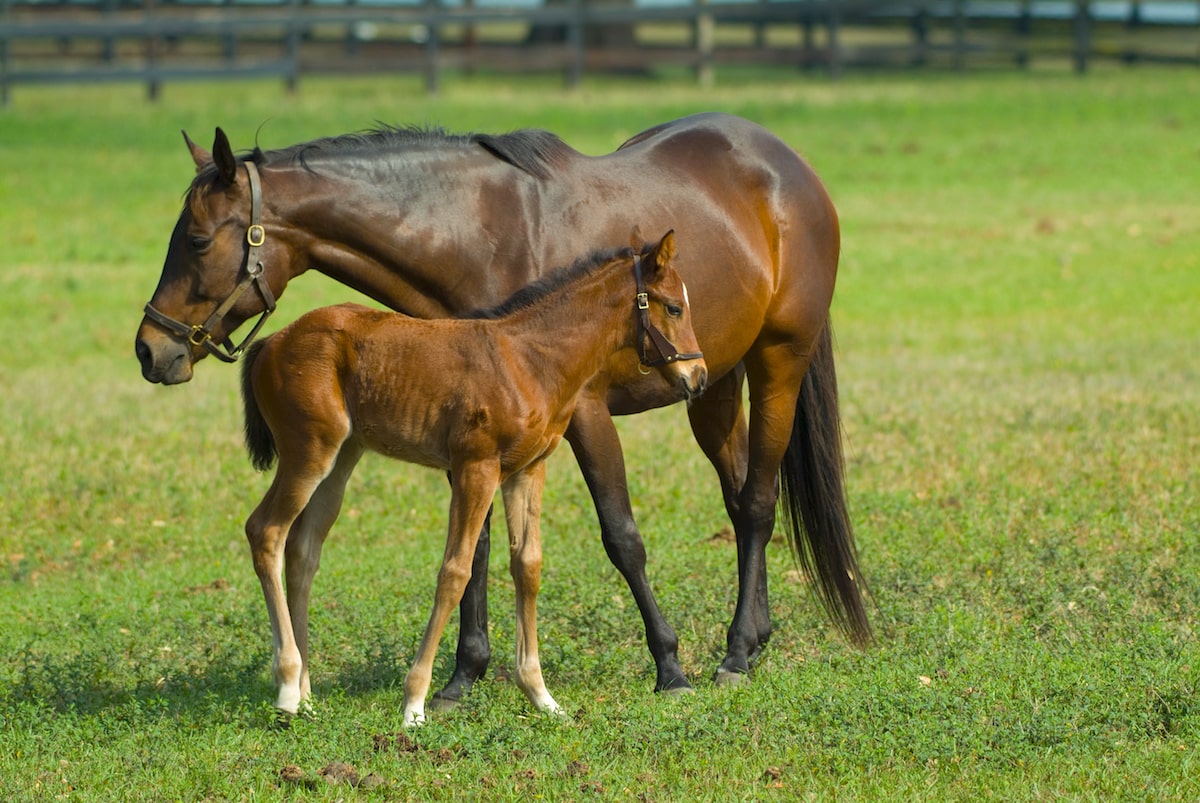
Mare owners must complete a live foal report within 30 days of a foal’s birth, after which they’ll receive a registration application and DNA kit from The Jockey Club. istock.com
How many times have you gone to the wrong vehicle in the mall parking lot, trying to open someone else’s sedan, SUV or pickup truck? Same color, same model, about the same age — oops, wrong car.
We’d like to think that could never happen with our horses. We know them intimately, from their distinct markings and the shade of their coats to their personality quirks that make them individuals. But fess up, can you really tell the difference among all the solid bays in a large hunt seat equitation or Western pleasure class?
The need to differentiate between similar-looking horses centuries ago gave rise to various methods of identifying them. Perhaps nowhere is that more important than with a racehorse. The public gambles its hard-earned money on these animals, and bettors deserve to have the confidence that the horse they wagered on is, indeed, that horse.
Therefore, by the time you get an off-track Thoroughbred, he has gone through a rigorous process of identification, registration and continual checking to be sure he’s the right horse.
From Breeding to Foaling
“The registration of a Thoroughbred born in the USA, Canada or Puerto Rico must meet the standards spelled out in the Principal Rules and Requirements of the American Stud Book,” says Rick Bailey, registrar of The Jockey Club (TJC). “This ensures the accuracy of the pedigrees and, since the foal crop of 2001, includes a DNA-based parentage verification test qualification for every registered Thoroughbred.” (Prior to 2001 the organization used blood typing.)
The Jockey Club is the body that maintains the Thoroughbred breed’s studbook. As the registrar, Bailey oversees the registry’s daily operations and administration of those rules and requirements.
The registration process with TJC starts well before a foal is born. A stallion owner must submit a form listing all the mares bred to that stallion by Aug. 1 of the year he covered those mares. These are all live covers because TJC’s rules prohibit artificial insemination and any form of embryo transfer.
The Jockey Club requests that mare owners complete a live foal/no foal report within 30 days of a foal’s birth (or expected birth, in the case the mare didn’t conceive or lost the foal). This provides a way to contact owners and send them a preprinted registration application and DNA kit to facilitate the process.
To avoid late fees breeders should register their foals within 12 months of birth. They collect a sample of the foal’s mane or tail for DNA testing and supply four photos from the front, back and each side of the foal, as well as descriptions of such characteristics as cowlicks.
The DNA sample, which must include the hair roots, goes into a pre-addressed envelope that TJC provides. The person registering the horse adds postage and mails it. The envelope heads to the lab that will be processing the DNA parentage verification.
While registration papers had long been literally “papers,” TJC began producing those papers digitally starting with the 2018 foal crop. Bailey says paper copies are still available, “but the certificate itself resides within an account with access by what is called the digital certificate manager.” That manager can be the horse owner or an agent designated by the owner.
Naming Rights
You can name your foal during the registration process, but Thoroughbred breeders often wait until later, especially if the horse is scheduled to go through a public auction. Sellers at Thoroughbred auctions have discovered that many buyers prefer to name the horses they purchase.
The Jockey Club doesn’t charge for naming a horse until Feb. 1 of its 2-year-old year. After that TJC charges a $100 naming fee. Bailey explains that encouraging early naming helps keep The American Stud Book as up to date as possible to support breeding and racing.
Horses cannot race without a registered name, and TJC must approve it. Names can’t be longer than 18 characters, including spaces, and TJC has several other requirements regarding what is acceptable (log in to your RRP account to access the archived Spring 2018 issue of Off-Track Thoroughbred to learn about naming).
For an additional $125 fee, a horse can be renamed if he or she hasn’t yet raced. Rarely has TJC permitted a horse’s name to be changed after it has raced and, then, only due to extenuating circumstances.
The Evolution of Identification
As technology has improved, the registration process has evolved. For example, since 1947, Thoroughbreds have been required to have as part of their identification a tattoo, placed inside the upper lip, to compete in a recognized race. Before every race the official racetrack identifier checks the tattoo against a horse’s registration papers to ensure the correct horse is heading into that race. Some people call the process “flipping the lip” because the identifier does exactly that to read the tattoo and compare it to what is on the registration papers.
Beginning with foals of 2017, TJC requires each horse to be microchipped. As of Jan. 1, 2020, the Thoroughbred Racing Protective Bureau, which oversees the lip tattoo program, has switched to a digital tattoo system. Instead of a horse receiving a lip tattoo, a certified technician creates what’s essentially a virtual tattoo.
Now, with these new technologies, identifiers can use microchip scanners and a tablet computer to pull up digital papers and photos to verify each horse’s identity before a race.
One of the reasons for switching to digital tattoos is that lip tattoos can become faded and hard to read over time. If you have an older off-track Thoroughbred, you may have discovered this when you tried to decipher his lip tattoo (look back at the Winter 2019 issue for an article on IDing horses with tricky traditional tattoos).
Horses don’t need lip or digital tattoos until they race. That process usually happens at the racetrack once the horse is in training there, as he gets closer to his first race.
Microchipping has made it easier to identify Thoroughbreds at all stages of their lives.
“Microchips help improve the efficiency and reliability of the identification process at farms, sales, racetracks and post-racing, as well,” says Bailey.
The Jockey Club is just starting to reap the benefits of microchipping for horses transitioning to second careers. Bailey says about 60% of the 2016 foal crop was voluntarily microchipped. Some older horses might be microchipped if their owners chose to do so. And if the horses competed in the RRP’s Thoroughbred Makeover, they had to be microchipped starting in 2019.
“The ability to access The Jockey Club’s database for information about a Thoroughbred based upon the microchip number is more reliable than the tattoo searches in the past,” Bailey says.
Breeders who intend to sell their horses at public auction have an even greater incentive to complete all the registration requirements early. Thoroughbred sales companies need horses to be registered with the papers on hand in order to sell, unless a foal is still at its mother’s side, in which case the mare has papers and they are sold as one entity.
Sometimes a horse also gets registered with its particular state breeders association. Many states have incentive programs, which make horses bred in that state eligible for racing bonuses. A horse’s owner or breeder typically pays an additional fee to make that horse eligible.
For example, registered California-breds can earn their owners a variety of monetary awards and bonuses for certain achievements in eligible races throughout California and beyond. The horse’s breeder might also receive year-end monetary awards based on the horse’s overall performance.
Prior to digital papers, registry officials manually added a Cal-bred registration sticker to a horse’s registration papers. That “sticker” can now be added electronically to a horse’s digital papers.
By the time you get your off-track Thoroughbred, he will have an extensive paper trail, even if it now resides on a computer. He might get a new job and, perhaps, a new name. But now you have an even better opportunity to research what his life was like before the two of you found each other.

